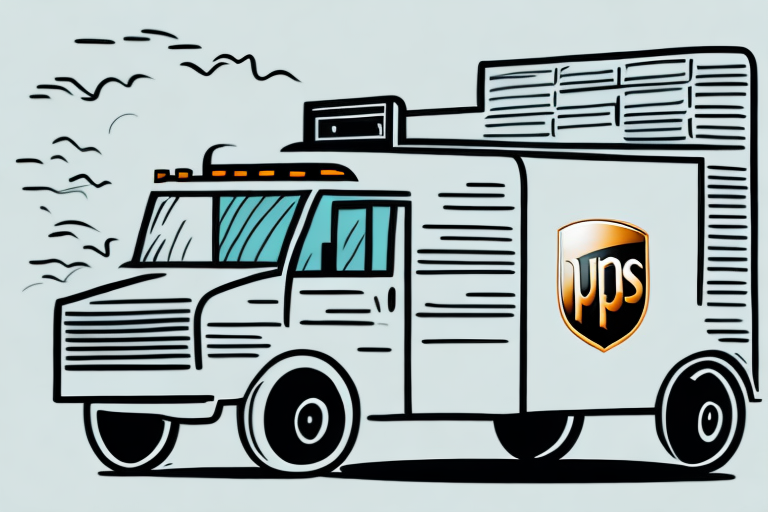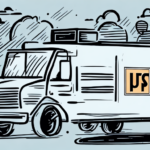Understanding the UPS Shipping Rates from Florida to Michigan
If you're sending a package from Florida to Michigan, it's essential to understand how UPS calculates shipping rates. This article delves into the factors affecting shipping rates, compares UPS's rates to other carriers, and provides actionable tips to reduce your shipping costs. Additionally, we'll explore the significance of package weight and dimensions, selecting the right packaging materials, and how delivery distance and transit time influence your rates.
Factors That Affect Shipping Rates
UPS shipping rates for shipments from Florida to Michigan are influenced by various factors:
- Package Weight and Size: Heavier and larger packages cost more to ship.
- Delivery Distance: Greater distances typically result in higher shipping costs.
- Transit Time: Faster delivery options like overnight shipping are more expensive.
- Service Type: Different UPS services (e.g., Ground, 2nd Day Air, Next Day Air) have varying costs.
- Additional Services: Services such as delivery confirmation, insurance, and signature requirements add to the cost.
- Fuel Surcharges: These fees account for fluctuations in fuel prices and are added to the base shipping cost.
- Destination Address: Delivering to remote or hard-to-reach areas may incur additional fees.
- Special Handling Fees: Items like hazardous materials or oversized packages may have extra charges.
According to the UPS Shipping Services, understanding these factors can help you anticipate and manage your shipping expenses effectively.
Comparison of UPS Shipping Rates with Other Carriers
When evaluating shipping rates, it's crucial to compare UPS's offerings with other major carriers like FedEx and USPS. While rates can vary based on package size and delivery location, UPS generally provides competitive pricing. For instance, a standard 10 lb package shipped via UPS Ground from Florida to Michigan might cost approximately $12, whereas FedEx Ground could be slightly higher or lower depending on the exact service level and promotions.
Additionally, UPS offers a variety of shipping options tailored to different needs:
- Next-Day Air: Fastest delivery option for urgent shipments.
- 2nd Day Air: Balances speed and cost for shipments that are time-sensitive but not urgent.
- Ground Shipping: Most cost-effective option for non-urgent deliveries.
Moreover, UPS provides a range of packaging options, including boxes, envelopes, and tubes, which can be selected based on the nature of the shipment. Comparing these options with other carriers can help you choose the most cost-effective and efficient shipping method for your needs.
How to Calculate UPS Shipping Rates from Florida to Michigan
Calculating UPS shipping rates involves several key inputs:
- Package Weight: The heavier the package, the higher the cost.
- Package Dimensions: Larger packages may incur dimensional weight pricing.
- Delivery Address: Urban areas like Detroit may have different rates compared to rural areas in Michigan.
You can utilize the UPS online shipping calculator to estimate your shipping costs. Simply enter the package details and destination to receive a range of shipping options and their respective costs.
UPS offers various shipping options, such as Ground, Air, and Express services, each with different delivery times and costs. For non-urgent shipments, Ground shipping is typically the most economical, whereas Express services are suited for time-sensitive deliveries.
Businesses that ship frequently may benefit from UPS's discount programs. Signing up for a UPS account can provide access to negotiated rates and other cost-saving benefits.
Understanding the Variables That Affect Shipping Costs
Several variables influence UPS shipping costs:
- Package Weight and Size: Both contribute to the overall cost, with larger and heavier packages costing more.
- Delivery Distance: Longer distances result in higher shipping fees.
- Transit Time: Faster delivery options incur higher costs.
- Additional Services: Features like delivery confirmation and insurance add to the cost.
- Service Type: Expedited services are more expensive than standard options.
- Seasonal Demand: Shipping rates may increase during peak seasons like holidays.
According to the 2023 Transportation Report, understanding these variables allows for better budgeting and cost management in shipping operations.
Additionally, destination zones and international shipping can introduce customs fees and taxes, further affecting the overall cost. It's essential to research and compare various shipping options to find the most cost-effective solution for your specific needs.
Seasonal fluctuations, especially during peak holiday periods, can lead to increased shipping rates. Planning shipments ahead of time or opting for alternative shipping methods, such as ground shipping during peak seasons, can help mitigate these costs.
Tips to Reduce Your Shipping Costs When Using UPS
Implementing the following strategies can help reduce your UPS shipping costs:
- Minimize Package Size and Weight: Use appropriately sized boxes and packing materials to keep your packages lightweight.
- Consolidate Shipments: Combine multiple items into a single package to reduce the number of shipments.
- Negotiate Rates: Businesses with high shipping volumes can negotiate better rates with UPS.
- Utilize UPS Ground Shipping: Opt for Ground shipping instead of air options when speed isn't a priority.
- Take Advantage of UPS Smart Pickup: This service schedules automatic pickups, saving time and reducing costs.
- Use Online Shipping Tools: Compare rates and services using UPS's online tools to find the most economical options.
Additionally, businesses can enroll in UPS's business discount programs to access reduced shipping rates and other benefits, further lowering shipping expenses.
The Importance of Package Weight and Dimensions in Shipping Rates
Accurately weighing and measuring your packages is crucial in determining shipping rates. UPS uses both actual weight and dimensional weight pricing to calculate costs. Dimensional weight considers the volume of the package relative to its actual weight, ensuring that larger, lightweight packages are priced appropriately.
For example, a package that measures 12" x 12" x 12" has a higher dimensional weight compared to a smaller package of the same actual weight, leading to increased shipping costs.
To minimize costs, use the smallest possible box that can safely accommodate your items and consider lightweight packaging materials. According to the Packaging Institute, optimizing package dimensions can lead to significant savings in shipping costs.
The distance between the origin and destination also plays a critical role. Longer distances require more fuel and resources, thereby increasing the shipping cost. Additionally, the urgency of delivery affects the choice of service; expedited shipping services like UPS Next Day Air command higher fees compared to standard ground shipping.
How to Choose the Right Packaging Materials for Your Shipment
Selecting appropriate packaging materials not only ensures the safety of your shipment but also impacts shipping costs:
- Use High-Quality Boxes: Durable boxes protect your items and prevent damage during transit.
- Opt for the Smallest Suitable Box: Smaller boxes reduce dimensional weight and lower shipping costs.
- Implement Proper Cushioning: Materials like bubble wrap, packing peanuts, or foam inserts safeguard fragile items.
- Consider Double-Walled Boxes: For extra protection, especially for heavy or delicate items.
Investing in quality packaging can prevent damage claims and returns, ultimately saving costs. The American Packaging Institute emphasizes the importance of choosing the right packaging to ensure product integrity and customer satisfaction.
Understanding the Impact of Delivery Distance on Shipping Rates
Delivery distance significantly affects shipping rates. The farther the package needs to travel, the higher the shipping costs due to increased fuel consumption and resource utilization.
For instance, shipping a package from Miami, FL, to Detroit, MI, covers a considerable distance compared to shipping within the same state, resulting in higher costs. According to UPS's shipping trends, optimizing shipping routes and consolidating shipments can help mitigate distance-related costs.
Additionally, the weight of the package exacerbates the cost associated with distance. Heavier packages require more fuel and handling, further increasing the total shipping expense. To reduce costs, consider using lightweight packaging materials and limiting the weight of your shipments.
The choice of shipping method also plays a role in cost fluctuations based on distance. Expedited shipping over long distances will cost significantly more than standard shipping options.
The Role of Destination Zone and Transit Time in Determining UPS Shipping Rates
Both destination zones and transit times are crucial in determining UPS shipping rates:
- Destination Zone: UPS divides the country into different zones based on distance from the origin. Shipping to higher-numbered zones, which are further away, generally costs more.
- Transit Time: Faster delivery options, such as overnight or two-day shipping, come with higher price tags compared to standard ground shipping.
Understanding these concepts allows you to choose the most cost-effective shipping options based on urgency and destination. For example, shipping to a distant zone with a short transit time will be more expensive than shipping to a closer zone with a longer transit time.
Refer to UPS's zone charts and transit time guidelines to better plan your shipments and manage costs effectively.
How to Properly Measure and Weigh Your Package for Accurate Shipping Costs
Accurate measurement and weighing of your packages are essential to avoid unexpected shipping costs:
- Use a Reliable Scale: Ensure your scale is calibrated correctly to get an accurate weight.
- Measure All Dimensions: Measure the length, width, and height of the package, including any protrusions.
- Include Packaging Materials: Account for boxes, padding, and any other packing materials in your measurements.
Incorrect measurements can lead to dimensional weight pricing, increasing your shipping costs. Utilizing tools like UPS's measurement guide can help ensure accuracy.
Additionally, labeling your packages with accurate weight and dimension information will streamline the shipping process and reduce the risk of surcharges or delays.
Tips for Negotiating Better UPS Rates for Your Business
If your business frequently ships packages, negotiating better UPS rates can lead to substantial savings. Here are some strategies:
- Sign Up for a UPS Account: Business accounts often come with discounted rates and other benefits.
- Increase Shipping Volume: Higher shipping volumes can provide leverage for negotiating lower rates.
- Explore Discount Programs: Programs like UPS's business discounts offer reduced rates for regular shippers.
- Work with a UPS Representative: Building a relationship with a UPS sales representative can help identify custom solutions and discounts tailored to your shipping needs.
Additionally, leveraging third-party platforms and software that negotiate shipping rates on behalf of businesses can also provide access to lower rates without direct negotiation.
Common Mistakes That Can Lead to Higher UPS Shipping Costs
Avoiding common shipping mistakes can help keep your UPS shipping costs down:
- Using Incorrect Box Sizes: Choosing boxes that are too large increases dimensional weight and shipping costs.
- Poor Package Security: Inadequately secured packages may be damaged in transit, leading to additional costs for replacements or refunds.
- Inaccurate Weighing and Measuring: Misrepresented package dimensions and weight can result in dimensional surcharges.
- Ignoring Packaging Best Practices: Improper packaging can lead to damaged goods and increased shipping expenses.
To avoid these pitfalls, adhere to UPS's packaging guidelines and use reliable tools for measuring and weighing your shipments.
Regular training for employees involved in shipping can also minimize errors and ensure compliance with UPS's standards.
The Impact of Fuel Surcharges on Your UPS Shipping Rates
Fuel surcharges are additional fees applied to shipping costs to compensate for fluctuating fuel prices. These surcharges are a standard practice in the shipping industry and are calculated based on the current cost of fuel.
For example, as fuel prices increase, UPS adjusts the fuel surcharge percentage to reflect the higher costs. According to UPS's fuel surcharge policy, these fees ensure that UPS can maintain reliable shipping services despite fuel price volatility.
While fuel surcharges add to the overall shipping cost, they are a necessary component of the pricing structure. To manage these costs, consider consolidating shipments or optimizing routes to reduce fuel consumption.
Understanding Dimensional Weight Pricing and How It Affects Your Shipment Cost
Dimensional weight pricing is a method UPS uses to calculate shipping costs based on the volume of a package relative to its actual weight. This approach ensures that large, lightweight packages that take up significant space in UPS's transportation network are priced appropriately.
The formula for dimensional weight is:
Dimensional Weight = (Length x Width x Height) / 139
For instance, a package measuring 20" x 20" x 20" would have a dimensional weight of approximately 57.6 lbs. If the actual weight is less than the dimensional weight, UPS charges based on the dimensional weight.
To minimize the impact of dimensional weight pricing:
- Use Compact Packaging: Select boxes that fit your items snugly to reduce excess space.
- Choose Lightweight Materials: Opt for materials that protect your items without adding unnecessary weight.
- Optimize Package Dimensions: Avoid oversized boxes that increase dimensional weight without providing additional protection.
By understanding and applying dimensional weight principles, you can better control your shipping costs. The UPS Packaging and Supplies guidelines offer detailed information on how to measure and package your items to minimize these costs.
In conclusion, comprehending the factors that influence UPS shipping rates enables you to make informed decisions that can significantly reduce your shipping expenses. By selecting the appropriate packaging materials, accurately measuring and weighing your packages, and negotiating favorable rates, you can ensure your shipments are both cost-effective and efficiently delivered to their destination.






















